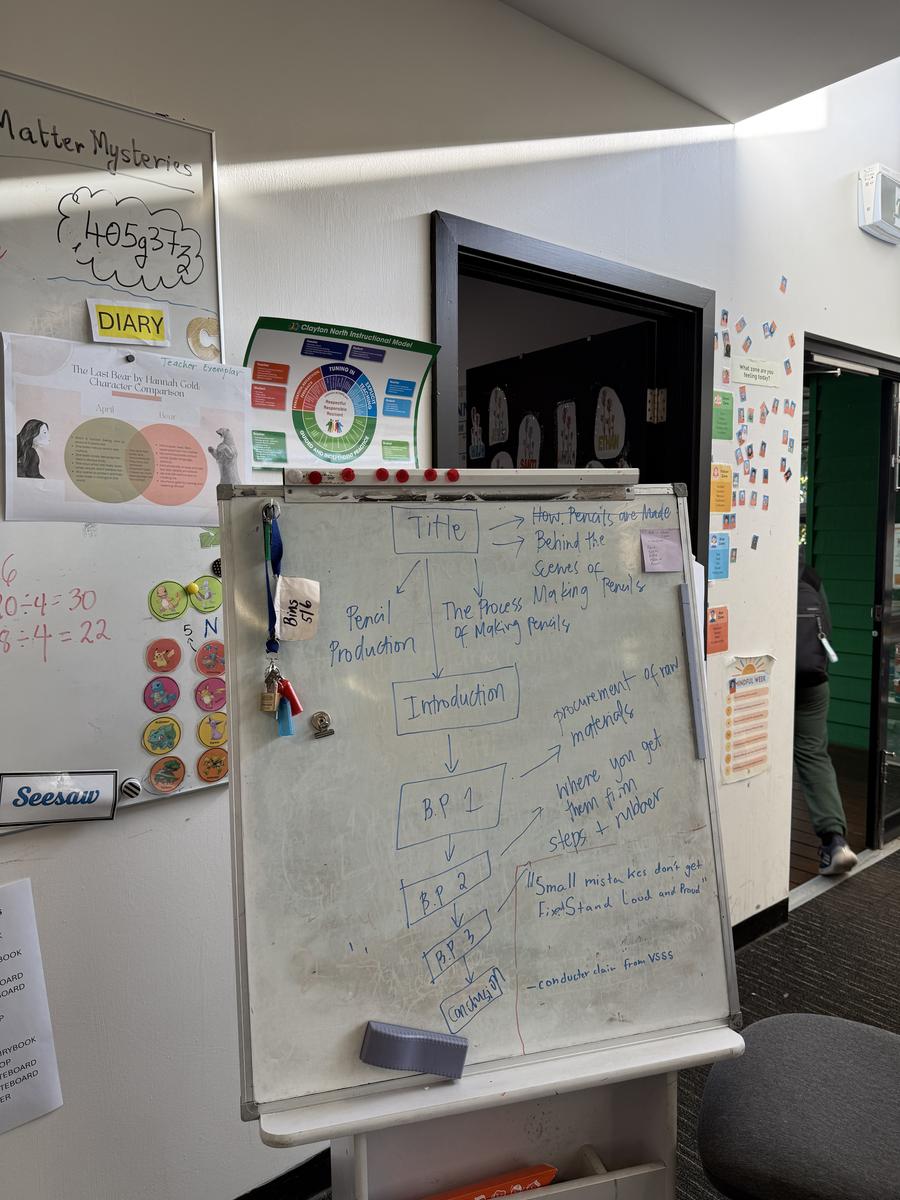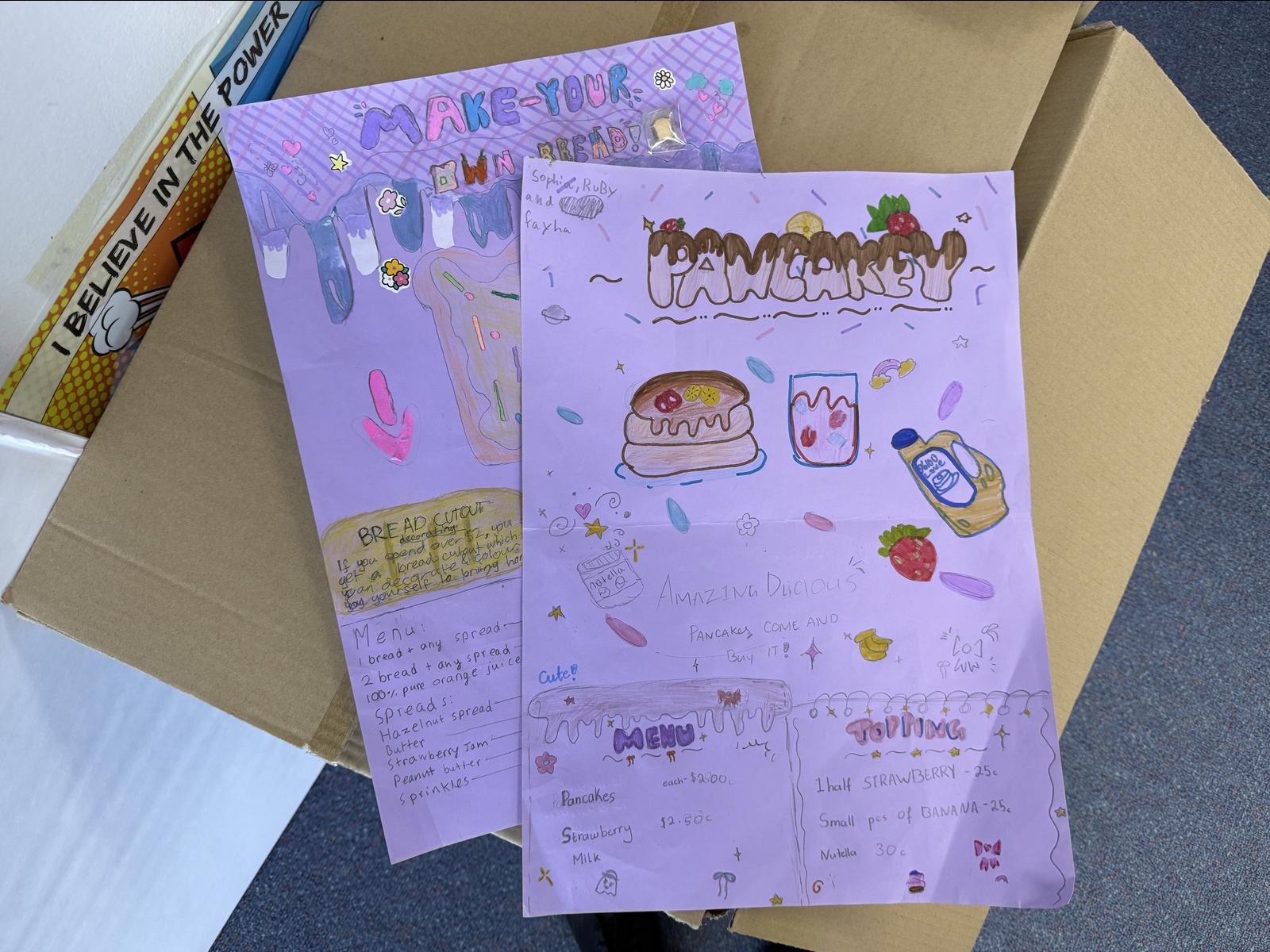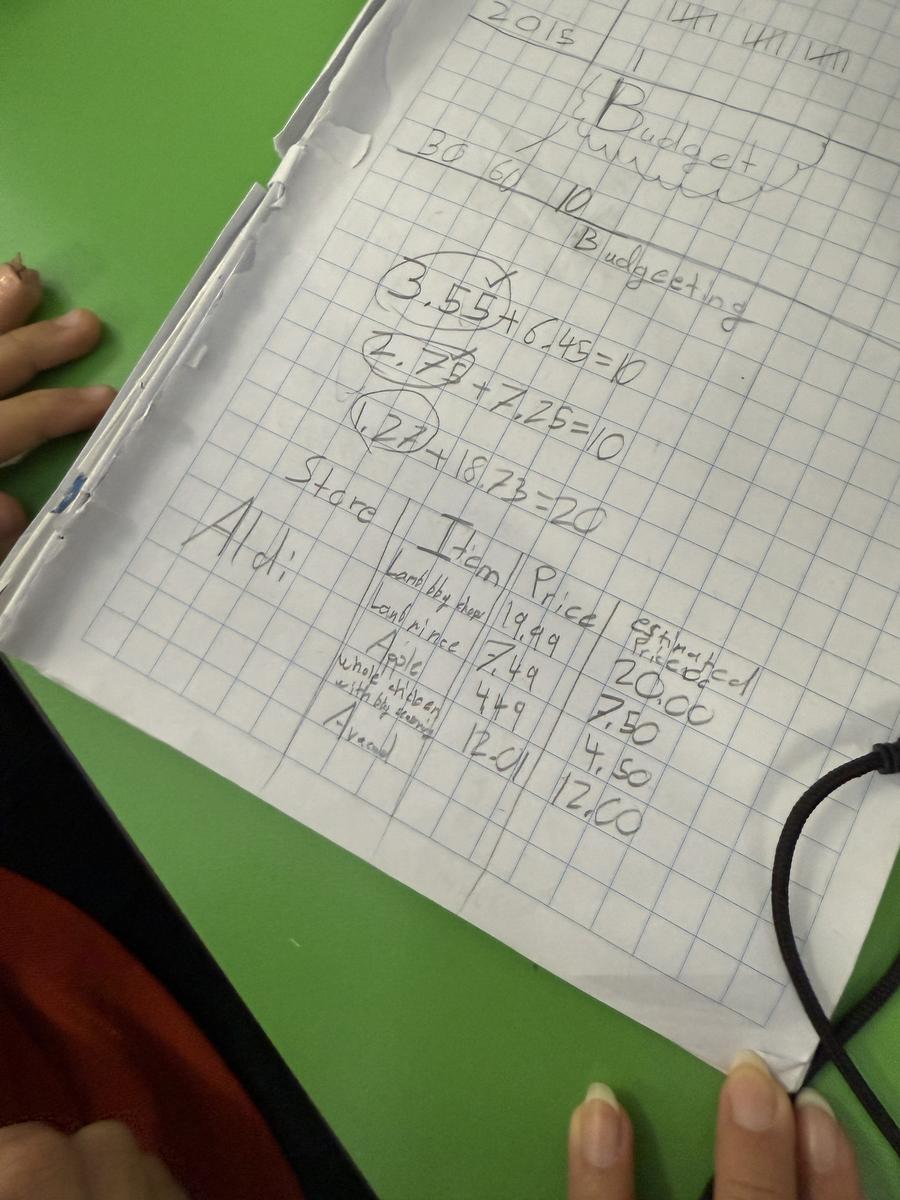Year 5/6 News
Radhika and Precious

Year 5/6 News
Radhika and Precious
What a wonderful start to the term it’s been in Year 5/6! Students returned from the holidays refreshed and ready to learn, and they still remember their routines really well. It’s been impressive to see their maturity shining through as they take on more responsibility and begin stepping up as true senior school leaders. They are supporting one another and setting a positive example both in and out of the classroom, showing that they’re ready to embrace the challenges ahead with confidence. In Well-being, we’ve started talking about problem solving. Last term, we focused on positive self-talk, and now we’re tying these ideas together to help students build resilience and tackle challenges with a strong, positive mindset.
Exploring Graphic Novels and Reading Strategies
In Reading, we explored graphic novels. We first learnt why we use pictures, speech bubbles, panels, thought bubbles, captions and onomatopoeia (special sound effects). We also learnt what gutters are. Gutters are gaps between panels in a graphic novel, and there can be a page that has one panel which is called a splash page. After we finished learning these elements, we made our own graphic novels which are a recount of our winter holiday. Everyone drew pictures and wrote their own speeches and captions; their holiday looked exciting. We then focused on the Dog-man-a-Tale-of-two-Kittys. In Chapter 1, our teacher mixed up some random pages. We had to sequenced the panels, and check to see if it was correct. Next, our teacher gave us questions about Chapter 1. We re-read Chapter 1, and answered the questions easily. The questions concerned a quote spoken by a character, and the answers explained what it reveals about that character.
We also examined the techniques of skimming and scanning in reading. Skim reading is when you read just the title, introduction, subheading, conclusion and the first sentence of a paragraph. Scan reading is when you read everything and note down the key words. We compared how to use skim reading and scan reading in graphic novels. We made a table, and we wrote down how to skim read and how to scan read in graphic novels. We also learnt speed reading with is the 'big umbrella' of skimming and scanning reading. Speed reading helps you read faster and better. We read a few pages from our book and use a finger or a pen to follow along. By the end of the week, everyone had a great time participating in this activity!
- Mahdiya Hasan, Year 5


Informative Writing in 5/6
Informative texts aren’t just about facts, but also about understanding the features and context of what you’re reading. In writing, we’ve explored how these texts are structured and how they communicate ideas clearly. Our topics included how pencils are made, and the trades Australia conducts with other countries. After researching, we started with our drafts. In 5/6, there's a classroom system: once your draft is done, you get three peer signatures to confirm its clarity. Only then can you move on to publishing! It is an encouraging way to ensure our informative writing makes sense to others.
- Saarah Zaman, Year 5
Digging Into Global Resources
In Inquiry, the Year 5/6s are learning about three types of resources: natural, capital, and human. One of our tasks is to choose a country, draw the map, and label where some of its natural resources like coal, iron ore, or gold are found.
- Fayha Mardhatillah, Year 6
We also talked about the importance of trade, not just within Australia, but with other countries around the world. It’s been amazing to see students understand how trading helps countries get what they need and support their economies. They’ve begun to see how Australia’s own natural resources, like coal, iron ore, and gold, play a big part in our economy and how we contribute to global trade.
Making Wise Money Decisions by Learning Financial Maths
In Math, we pretended to be business owners as we were learning about budget, profit, and loss. We were given the task to put up a food stall at CNPS for future fundraising ideas.
Let’s talk about the budget! A budget is a financial plan that consists of income and expenses for goal achievement. We plan to generate income by selling wafers to other students. The expenses come from buying a wafer from Woolies. When the income is bigger than the expenses, it means we get a profit. However, if the expenses are bigger than the income, that means we will incur a loss.
Profit is when the income is greater than the expenses. For example, you buy a toy for $ 5.00, then you sell it for $ 7.00, which means you get $ 2.00 profit. Loss is when the expenses are bigger than the income, but sometimes you need a loss to get profit. For example, when you buy an apple for $ 3.00, you may need to sell it for $ 1.50, to attract more people at your store.
Part of our project was making a fun poster for our “potential customers” to look at! We divided a piece of paper into 3 parts, so two-thirds of the paper was the poster, and one-third of it was the menu along with the price. At the back of the paper was a table for our expenses, the total money that we would get after selling everything, and the estimated profit.
- Ibrahim Alfaruq, Year 5



